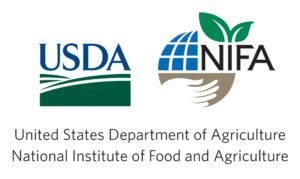COVID-19 Potable Water Pathogen Screening Project
NWAL and NEPHROS provide free water screenings for buildings on Tribal reservations
During COVID-19 response operations around the country, many buildings have been left unattended or “unoccupied” for several weeks. As a result, water in those buildings has not been adequately circulated and may present a risk to public health. An “unoccupied” building is one that has consistently had less than 50% of the “normal occupancy.” The Building Biome of a building with low or no volume of water flow through the premise plumbing will likely have a broader and more diverse bacterial community at higher concentrations than those buildings with “normal” water volume flow. Bacterial concentrations, expressed as colony forming units per milliliter of water, are a measure of the water quality.
The NWAL COVID-19 Coordination Team has partnered with Nephros, a water testing and purification company, to analyze water samples collected from buildings on tribal reservations that have been left vacant due to COVID-19 emergency response actions. One-liter water samples will be taken from appropriate locations in an unoccupied building and compared to water samples taken from buildings that have had “normal” activity. Scientists from the Nephros Pathogen Detection Systems Division will use a combination of polymerase chain reaction (PCR) and genetic sequencing to screen the water samples for a complete suite of microorganisms (pathogenic and non-pathogenic). Once screened and analyzed, Nephros will provide a report detailing the microbiological burden of the samples and a summary of any harmful pathogens present in the water samples.
Water Collection Procedure
Preferred Buildings include those that may have the highest public health risk including:
- 1st choice: Schools, eldercare facilities, community centers, health centers
- 2nd choice: Libraries, office buildings, tribal government facilities
Samples will be taken from two facilities:
- One building should be unoccupied (consistently less than 50% of normal) with limited or no water flow during the last 6-8 weeks
- Second building should have normal water flow throughout the building during the same time period
- Ideally, both buildings will be on the same water source (well, municipal water, etc.)
Preferred water sample locations:
- Shower head, bathtub, bathroom faucet, kitchen sink, water fountain
Water Collection Procedure:
- Water sample kit (including gloves, water bottle, ziplock bags, and return labels) will be provided
- Don gloves and open ziplock bag and water container at the water source collection point
- Do not touch inside the container or under the lid
- Fill the 1-liter bottle to the mouth and tightly seal
- Label the container with enclosed label with date, time, location of the collection (e.g., 1st floor bathroom faucet), water faucet temperature (hot, cold or ambient)
Shipping:
- Place 1-liter bottle in clean enclosed ziplock bag
- Deliver to shipping location for overnight delivery. Shipping label and box will be provided.
Other Information (if known):
· Provide any additional information available about the water source including pH, chlorination, other on-site treatment or filtration used on the enclosed information sheet
Have questions? Contact:
- Christian Railsback at: [email protected] or mobile: 703-969-6224
- For more information about Nephros go to: https://www.nephros.com


